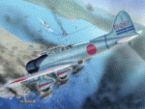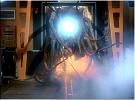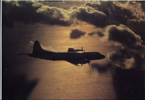ChezDaJez
Posts: 3436
Joined: 11/12/2004
From: Chehalis, WA
Status: offline

|
quote:
If the zero was a superior plane, and the Japanese pilots were superior pilots, then "How is it that in the 4 1942 US CV vs IJN CV battles, when F4Fs directly engaged A6Ms, they consistently acquitted themselves better?"
The Zero had many advantages over the Wildcat but the greatest advantage the Wildcat had was its ability to bring its pilot home after suffering battle damage. We'll nevere know how many Japanese pilots were lost trying to nurse a damaged plane home. Just having self-sealing tanks made a huge difference. A single bullet hole in a fuel tank was normally good enough to bring down a Zero if he had any distance to fly.
Another factor is pilot fatigue. It would be far more realistic to adjust fatigue levels then experience and aircraft attributes. The game does a poor job of modeling fatigue. Engaging in combat should induce large amounts of fatigue. Take a look at what the two fleets had been doing prior to those 4 carrier battles.
The Japanese had been in near continuous combat since the start. American pilots were much fresher. The US conducted a few raids and basically picked when and where they fought and rested in between. So Japanese fatigue levels should be much higher. And its a well known fact that fatigued pilots make far more mistakes and are less likely to survive combat.
quote:
Asking the question strictly vis the CVs sets aside the alleged and very minor Japanese disadvantages (that did not offset Allied disadvantages there) of the Guadalcanal encounters between 11th AF and the VMF VF pilots at Henderson because the CVs typically faced off at ranges that favored the Zero and handicapped the F4F. Yet the F4Fs still came out on top.
Wow, its obvious you have never served as aircrew anywhere. You have no understanding of the variables that account for aircrew performance. Fatigue is insidious. A tired pilot makes mistakes. It affects his ability to think clearly. Having that longer range can also be a serious disadvantage, especially when damaged. These factors play on your mind and can create feelings of futility. Which would you rather do? Fly escort on a bunch of bombers in a lightweight fighter for 550 miles (8-10 hours of flight time), engage in combat, then possibly nurse a damaged plane home OR fly from a primitive airstrip in a robust airplane, engage the enemy, then land and wait for the next attack. The Japanese knew that if they were damaged, they stood little chance of returning. US pilots had an excellent chance of doing so. Even if you got shelled that night, its still better being on the defensive at Guadalcanal. And you make Rabaul sound as though it were a garden paradise... hardly. The living conditions were certainly much better than at Henderson but the fact is it was no picnic either. As the battles progressed, both sides became fatigued but conditions continued to improve for US pilots. They didn't for Japanese.
The Japanese lost a lot of good pilots in both the land and sea campaigns that weren't easily replaced. Their training program had yet to really ramp up to meet the demand.
Combat should induce much more fatigue than what the game actually does. Fatigue is primarily based on range in WitP. Combat should be the greatest factor. And if you have to fly a long way then engage in combat, fatigue should really jump.
Chez
_____________________________
Ret Navy AWCS (1972-1998)
VP-5, Jacksonville, Fl 1973-78
ASW Ops Center, Rota, Spain 1978-81
VP-40, Mt View, Ca 1981-87
Patrol Wing 10, Mt View, CA 1987-90
ASW Ops Center, Adak, Ak 1990-92
NRD Seattle 1992-96
VP-46, Whidbey Isl, Wa 1996-98
|
 Printable Version
Printable Version














 New Messages
New Messages No New Messages
No New Messages Hot Topic w/ New Messages
Hot Topic w/ New Messages Hot Topic w/o New Messages
Hot Topic w/o New Messages Locked w/ New Messages
Locked w/ New Messages Locked w/o New Messages
Locked w/o New Messages Post New Thread
Post New Thread